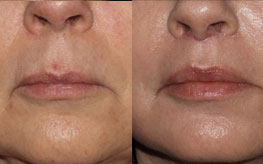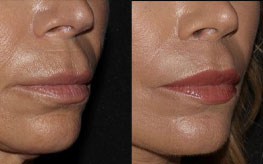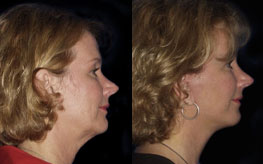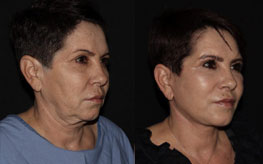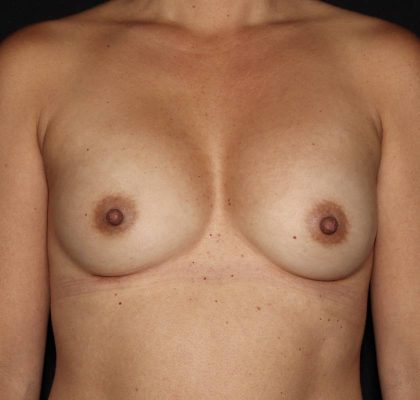Breast Augmentation
Conveniently located to serve the areas of San Diego, CA

Breast augmentation, also known as breast enlargement or enhancement, is a surgical procedure allowing women to achieve their desired breast size and shape. At Alexander Cosmetic Surgery, Dr. John Alexander and Dr. Jordan Kaplan are dedicated to helping their patients achieve natural-looking and beautiful results through breast augmentation.
We take a customized approach to breast augmentation, considering factors such as implant placement, incision location, and overall aesthetic goals. This procedure is an excellent way to accentuate your curves and restore balance to the body. Women with small breasts, disproportionately sized breasts, or diminished breast volume can all enhance the symmetry, firmness, and size of their breasts through a breast augmentation procedure.
If you are considering breast augmentation, we invite you to schedule an appointment with Dr. Alexander or Dr. Kaplan at our San Diego practice. During your consultation, we will thoroughly evaluate your candidacy for the procedure and guide you through the process, ensuring you have all the information you need to make an informed decision. To get started, please call us at (858) 455-7557 or request a consultation online.
Contents
Before and After Photos
About Breast Augmentation
Breasts play a significant role in a woman’s self-image, femininity, and overall body proportion. However, factors such as genetics, weight loss, pregnancy, or aging can affect the size and shape of the breasts, leading to dissatisfaction and a loss of confidence. Breast augmentation is a popular surgery that offers many benefits for patients seeking to enhance their physical appearance and boost their body image, with roughly 300,000 procedures taking place every year. (1)
Implant Type
There are three main breast implant types; silicone, saline, and gummy bear.
- Silicone – Silicone implants are a popular choice among women seeking a natural look and feel. These implants are pre-filled with a cohesive silicone gel that closely resembles the consistency of natural breast tissue. The gel provides a soft and realistic result, enhancing the overall appearance of the breasts.
- Saline – Saline implants are filled with a sterile saltwater solution. These implants can be adjusted during surgery to achieve the desired volume, and any leakage can be quickly detected as the solution is harmlessly absorbed by the body. Saline implants also have a slightly firmer feel compared to silicone implants.
- Gummy Bear – Gummy bear implants, also known as highly cohesive silicone gel implants, are designed to maintain their shape even if the outer shell is compromised. This makes them an ideal choice for women looking for long-term durability and a more stable shape.
Incision Type
Incisions are made in inconspicuous areas to minimize visible scarring. We will discuss with you which incision options are best for your desired outcome. Options for incision placement include: (2)
- Inframammary incision: in the crease under the breast
- Periareolar incision: around the bottom of the areola
- Transaxillary incision: under the arm
Incisions vary based on the type of implant, degree of enlargement desired, your particular anatomy, and patient-surgeon preference. In most patients, we tend to prefer an inframammary incision because it heals incredibly well, can be used again in the future, if necessary, without creating additional scarring, and allows for the best control when meticulously creating a pocket for your implant. If you are having a breast lift in addition to your breast augmentation, the incision for the lift will be used to insert the breast implants.
Implant Position
Implants can be placed above the pectoralis muscle or below the muscle. Most often, implants are placed below the muscle to obtain better soft tissue coverage of the implant in the medial upper chest. Implants are placed above the muscle when the patient has more breast tissue coverage, when the breast tissue is droopier and the patient does not want to undergo a breast lift, or a patient is a high performance athlete and does not want to involve her chest muscles in surgery.
Implant Size
Drs. Alexander and Kaplan spend a great deal of time discussing size with patients. It is important to make sure that the surgeon and the patient are speaking the same language regarding size. By looking at photographs in magazines, before and after pictures, and discussing the patient’s desire for their overall look and proportion, we can come to a clear understanding of what each patient desires regarding size. It is more important to focus on the appearance than it is a specific implant volume.
What is Fat Transfer Breast Augmentation?
Autologous fat grafting allows patients to enhance the size and shape of their breasts using their own natural body fat. This innovative technique offers a more organic and natural-looking alternative to traditional breast implants. The process begins with adipose tissue harvesting, where excess fat is carefully extracted from areas such as the abdomen, thighs, flanks, and back using liposuction techniques. The harvested fat is then processed to purify and prepare it for transfer.
During the fat transfer surgery, the purified fat is strategically injected into the breasts to restore volume, improve contour, and create a fuller and more youthful appearance. This personalized approach allows for precise shaping and sculpting, resulting in beautifully enhanced breasts that look and feel completely natural.
Fat transfer to the breast can be done as an isolated breast augmentation procedure, in combination with a breast lift, or as a method to naturally enhance an implant based breast augmentation. Lastly, fat transfer can be used for patients who desire to remove their breast implants but want to restore some of the volume that is lost during breast implant removal.
Dr. Alexander or Dr. Kaplan will discuss the benefits of implant-based and non-implant-based augmentation with you at your personal consultation.
Benefits of Breast Augmentation
- Restored Breast Shape and Fullness – Aging, gravity, and hormonal changes can affect breast shape and fullness. Breast augmentation can restore a youthful, lifted appearance, helping patients regain confidence in their breasts.
- Improved Body Proportion and Symmetry – Breast augmentation can address asymmetrical breasts, creating a more harmonious and symmetrical overall body shape.
- Restored Breast Volume after Pregnancy or Weight Loss – Pregnancy and weight loss can cause a loss of breast volume. Breast augmentation can restore fullness and shape, rejuvenating the breasts.
- Corrected Asymmetrical Breasts – Many women experience naturally uneven breasts. Breast augmentation can correct this asymmetry, creating a more balanced and aesthetically pleasing appearance.
- Enhanced Clothing Options and Improved Fit – With breast augmentation, patients can enjoy a wider range of clothing choices and improved fitting of various styles, enhancing their personal style and fashion choices.
- Boosted Body Image and Self-Esteem – Achieving the desired breast size and shape through breast augmentation can have a profound impact on body image, leading to increased self-esteem and a positive self-image.
Candidates for Breast Augmentation
Breast augmentation is usually performed on adult women who have healthy breast tissue and chest muscles and have realistic goals for improvement. Occasionally younger patients, even in their late teens, may be candidates for breast augmentation if they are emotionally mature and have their parent’s approval. (3)
Good Candidates are:
- Healthy individuals who do not have a serious illness or medical condition that can impair healing
- Individuals with a positive outlook and specific goals in mind for breast surgery
But because every case is unique, the only way to accurately determine which procedure is best for you is to consult with Dr. Alexander and Dr. Kaplan.
Personal Consultation
To ensure the most natural-looking results, Dr. Alexander or Dr. Kaplan will recommend the procedure that most appropriately matches your needs and offers realistic expectations for post-surgery outcomes.
Breast size and shape are important, so be honest and open about your expectations when talking with your surgeon. Implant type and size will be determined not just by your desire but just as importantly by your breast anatomy, skin elasticity, and body type.
The success and safety of your breast augmentation procedure depend very much on your being completely candid during your consultation. We will ask you questions about your health, desires, and lifestyle.
Be Prepared to Discuss:
- Why you want breast augmentation surgery, your expectations and desired outcome
- Medical conditions, drug allergies, and medical treatments
- Use of current medications, vitamins, herbal supplements, alcohol, tobacco and drugs
- Previous surgeries
- Family history of breast cancer and results of any mammograms or previous biopsies
We May Also:
- Evaluate your general health status and any pre-existing health conditions or risk factors
- Examine your breasts, and take detailed measurements of their size and shape, skin quality, and placement of the nipples
- Take photographs for your medical record
- Discuss your options and recommend a course of treatment
- Discuss likely outcomes of breast augmentation surgery and any risks or potential complications
- Discuss the anesthesia options available
To schedule your consultation at Alexander Cosmetic Surgery in San Diego, please call (858) 455-7557. Our friendly staff is ready to assist you and answer any questions you may have.
Preparation
Before surgery, we will have you:
- Take certain medications or adjust your current medications
- Avoid taking aspirin, anti-inflammatory drugs, and herbal supplements as they can increase bleeding
- Stop smoking well in advance of surgery
- Depending on your age get a baseline mammogram before surgery to help detect any future changes in your breast tissue
During a Pre Operative appointment, usually 1-2 weeks before surgery, we will:
- Get lab testing or a medical evaluation
- Tell you what to do on the night before and morning of surgery
- Discuss the use of anesthesia during your procedure
- Explain post-operative care and follow-up, and what help you will need after the procedure
We will explain in detail the risks associated with surgery. Our staff will ask you to sign consent forms to ensure that you fully understand the procedure you will undergo and any risks and potential complications.
Breast Augmentation Procedure
The procedure typically takes about one hour depending on the individual and certain surgical variables. In almost all instances, general anesthesia will ensure a patient’s comfort during the surgery.
There are five basic steps to Breast Augmentation.
- Step 1 – The Incisions
Your surgeon will make a 1-inch incision and carry it down to the pectoralis muscle, which covers the anterior chest wall.
- Step 2 – Creating the Pocket
They will make a space for the implant, either under or over the pectoralis muscle, and ensure a bloodless dissection with precise pocket creation to perfectly match your implant.
- Step 3 – Determining Implant Size
Your surgeon will use a temporary saline-filled sizer to determine which size implant should be used. They can add or remove saline to determine which range of volume will give the desired appearance.
- Step 4 – Placing the Implant
The surgeon will wash the pocket with saline and place an antibiotic solution. Then, he will place and position the permanent implant correctly in the pocket. We then sit the patient up to check for symmetry. We make minor adjustments as necessary to make the breasts as symmetrical as possible.
- Step 5 – Closing the Incisions
Finally, your surgeon will judiciously close the pocket with sutures. We use removable sutures on the skin to minimize scarring.
Recovery & Results

You will need someone to drive you to and from surgery and to stay with you for at least the first night following surgery. If you experience shortness of breath, chest pains, or unusual heartbeats, you should call your surgeon immediately.
You will likely experience a recovery period of 24 to 48 hours and an additional reduced-activity period of a few days. You will experience soreness and swelling for a few weeks.
Exercise and normal activity can resume at approximately 2-3 weeks. Over time, post-surgical swelling will decrease and incision lines will fade.
Following our instructions is key to the success of your surgery. The surgical incisions mustn’t be subjected to excessive force, abrasion, or motion during the time of healing.
The results of breast augmentation surgery are immediately visible but improve over the first few months. Over time, swelling will resolve and incisions will fade. Your satisfaction with your new image should continue to grow as you recover and realize the fulfillment of your goal of fuller breasts.
How Much is Breast Augmentation in San Diego?
The cost of breast augmentation can vary depending on several factors. It is important to understand that each patient’s needs and goals are unique, and the price of the procedure will be tailored to their specific situation.
If you would like to learn more about the cost of breast augmentation at Alexander Cosmetic Surgery, please contact our office at (858) 455-7557 to schedule a consultation. Dr. Alexander, Dr. Kaplan, and our team are committed to helping you achieve your aesthetic goals in a safe and personalized manner.
References
- Shridharani SM, Bellamy JL, Mofid MM, Singh NK. Breast augmentation. Eplasty. 2013;13:ic46. Accessed September 21, 2023. https://www.ncbi.nlm.nih.gov/pmc/articles/PMC3685325/#:~:text=Since%202006%2C%20augmentation%20mammoplasty%20has
- Fardo D, Sequeira Campos M, Pensler JM. Breast Augmentation. PubMed. Published 2023. Accessed September 21, 2023. https://www.ncbi.nlm.nih.gov/books/NBK482206/#:~:text=Common%20access%20incisions%20include%20the
- Jordan S, Corcoran J. Considerations in Breast Augmentation in the Adolescent Patient. Seminars in Plastic Surgery. 2013;27(01):067-071. doi:https://doi.org/10.1055/s-0033-1343998

